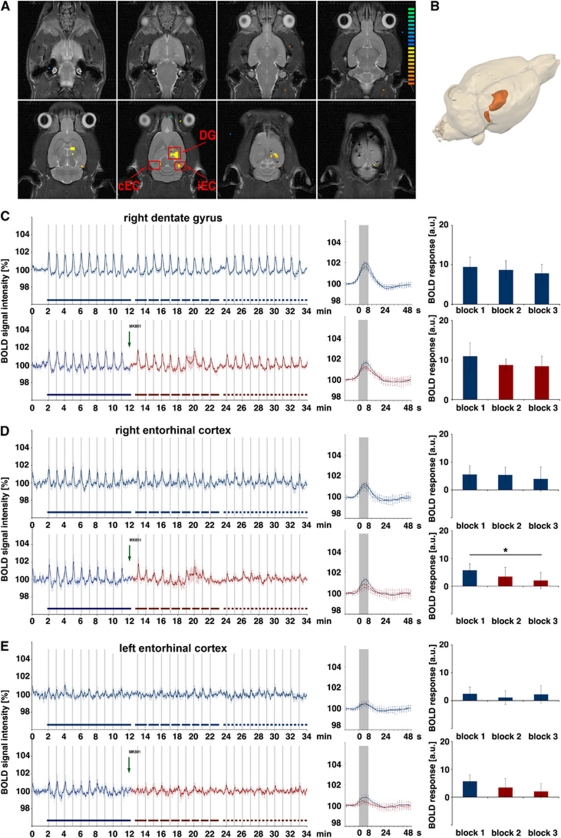Figure 5.
Development of the blood oxygen level-dependent (BOLD) response during application of MK801. The perforant pathway was stimulated with 3 consecutive stimulation blocks containing 10 low intensity stimulation trains. MK801 was again applied after the first stimulation block (green arrow), whereas the control group remained untreated. (A) BOLD response pattern caused by the stimulation and the measured regions: DG, ipsilateral (right) dentate gyrus; iEC, ipsilateral entorhinal cortex; cEC contralateral (left) entorhinal cortex. (B) 3D visualization of significant BOLD responses induced by repetitive low intensity stimulation trains. (C–E) The elicited BOLD responses in these areas are shown again as in Figure 2. Again MK801 did not change significantly the BOLD response in the dentate gyrus, whereas the magnitude of the BOLD response in the right entorhinal cortex decreased significantly during the third stimulation block. No clear BOLD signals are elicited in the contralateral entorhinal cortex; therefore, no conclusions can be made (control group: n=6, test group: n=6, *P<0.05, Wilcoxon's test).

